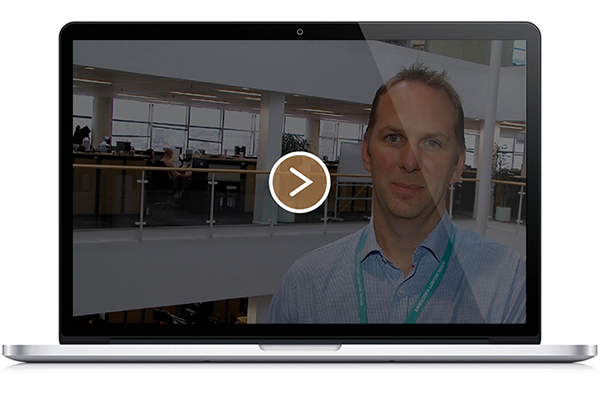 SFT place
SFT place
Asset Management
New technologies, expensive office space and the introduction of more flexible working methods with the focus of delivering improved public services, are just a number of the contributing factors encouraging the public sector to consider how their buildings should be used in the future.

For the past five years we’ve been working with the public sector to help them make bold decisions, guiding them to look differently at the buildings they occupy for the services they need to deliver.
This new thinking is leading to securing wider economic and social benefits as resources are used more efficiently, money is saved and the buildings will have a greater impact on the ground.
And we’ve successfully embedded these new approaches into our asset management programmes which are supporting public bodies to achieve more than £700m of savings and is helping the public sector to develop the right conditions for more effective working.
Within Scottish Government we’ve led and are delivering the first phase of an ambitious Smarter Workplaces programme, aimed at creating a smaller, leaner, greener and more effective office portfolio. The next phase will look to achieve further savings and develop improved estate management.
There is now further scope to improve the performance of large property portfolios held by public bodies through taking a more strategic approach to asset management. Improved asset management can deliver future savings of similar significance to that already achieved while acting as a catalyst and an enabler for greater change.
Our programmes will continue to focus on maintaining ambitions whilst accelerating the pace of delivery.
Objectives for 2017/18
- Support and challenge public bodies across the local estate in their delivery of efficiency savings, targeting £100m (capital and revenue)
- Work with Scottish Government to launch and deliver the second phase of its Smarter Workplaces Programme, including the adoption of a new approach to estate management
- Support the further development and implementation of the emergency services’ estate strategies to deliver efficiency savings and realise more effective service outcomes
- Develop and broker more opportunities for the public sector to share premises in at least six localities, to enable new ways of working and efficiency savings
- Support at least two regional groupings to create a one public sector approach to asset management
Land
As our major investment programmes continue to deliver new schools, hospitals and colleges, opportunities arise to maximise the sale of properties they’re replacing.
Being able to sell empty building quickly means their burden on public finances is dramatically reduced and money generated from sales can be reinvested into more new buildings swiftly.
Our commercial property team places strong emphasis on preparing surplus sites well in advance of marketing, in order to manage and speed up the whole disposals process and secure best value.
And over the past 12 months, we’ve continued to make significant progress in selling surplus properties, particularly vacant NHS and college buildings (including the former Merchiston and Victoria Hospitals in Greater Glasgow, Strathclyde Hospital in Motherwell, Royal Cornhill in Aberdeen, Murray Royal and Sunnyside Hospitals in Tayside and the former Inverness College property at Midmills).

In developing and selling these properties, over £50m of capital has been returned to the public sector allowing additional investment to be made in other public services. Many of the sites sold will be developed for housing, enabling more than 2,000 homes to be built thereby increasing the supply of much-needed homes.
The progress we’ve made relates not only to the number of sites taken to the market and capturing much-needed income back to the public sector, but it has also increased market awareness and generated a more positive perception around working with the public sector on the sale of their properties.
For the year ahead, opportunities lie in front of us to secure wider benefits from selling surplus sites, such as the accelerated delivery of more housing as well as securing alternative mixes of housing types.
Lessons learned and wider market engagement provide a great opportunity for us to support the public sector in taking a more proactive approach to influencing the financial and non-financial outcomes from the sale of surplus sites.
Objectives for 2017/18
- Identify opportunities for collaboration and support on major asset disposals not currently included in our surplus property programmes
- Work with partners to assemble and deliver surplus property programmes to bring 15 assets to the market.
- Secure £25m in capital receipts for the public sector.
- Develop pathfinder projects to test the use of innovative finance or guarantees to unlock at least one of: accelerated housing development; local authority direct development; or opportunities for pension fund investment.
- Develop approaches to enable the quick and efficient sale of land between public bodies
Operational PPP
Across Scotland, there are many essential buildings such as schools and hospitals, built and maintained through Public Private Partnerships (PPPs). PPP contracts require the public sector to make monthly payments to the private sector to ensure their buildings are properly looked after.
These historic contracts are often complex and need active management by the public sector.
Building on the momentum of previous years, our Operational PPP contract management team has carried out a number of in-depth and targeted reviews of these contracts. Focusing on the education and health sectors, the team has identified where the public sector can make repeated savings as well as significant one-off savings.
More recently, we’ve formed joint working arrangements with the NHS to create a specialist team to support them in improving their PPP contract management, share best practice and secure added value.
Objectives for 2017/18
- Further develop the programme, contributing to efficiency savings of £15m
- Establish a collaborative arrangement across public sector bodies for the contract management of PPP projects in two geographical areas
- Assess the value for money, affordability and other implications of ending PPP/PFI arrangements
